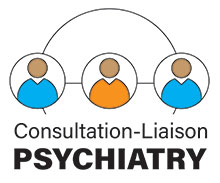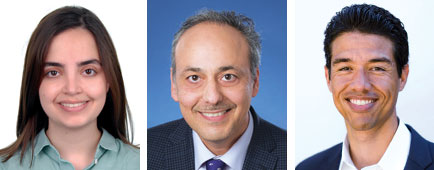The C-L Psychiatrist’s Role in Clinician Education
Abstract
This article is one of a series coordinated by APA’s Council on Consultation-Liaison Psychiatry and the Academy of Consultation-Liaison Psychiatry.

A consultation-liaison (C-L) psychiatry service is composed of psychiatrists and mental health professionals who collaborate with nonpsychiatric colleagues (for example, medical, nursing, and other allied health professionals) as part of an interdisciplinary team. Like general psychiatrists, C-L psychiatrists are involved in educating patients and families. However, an often underemphasized role of the C-L service is the education of health care colleagues in other specialties to better understand, communicate, and connect with patients with comorbid medical and psychiatric illnesses. Below is a case that will help illustrate the role of C-L psychiatry in educating and training other health care professionals.
Case Study
Ms. DT is an 80-year-old woman with a history of schizophrenia who has been stable for many years. Her medical history includes a diagnosis of diabetes and hypertension. Ms. DT was hospitalized for medical management of a complicated urinary tract infection.
On the third day of her admission, the C-L psychiatry service was consulted because Ms. DT had been “acting strangely” the previous night. The nursing staff mentioned that the patient had been screaming overnight about “insects crawling in the room trying to get into her IV.” During morning rounds, the patient was distressed and yelling that there were people in the room trying to kill her. The nursing staff became concerned and asked for the patient to be transferred to the psychiatry floor because Ms. DT’s schizophrenia was “out of control.”
On assessment by the C-L psychiatry team, the patient appeared confused and inattentive, and she was hallucinating, specifically seeing ants crawling on the walls of her room. Given the fluctuating and acute nature of her symptoms, she was diagnosed with delirium by the C-L psychiatry service. Given the diagnosis of delirium, a discussion took place with the treating team that Ms. DT’s clinical needs would be better addressed if she remained in the medical unit under their care.
The nursing staff approached the C-L psychiatry team to understand why Ms. DT was not being transferred to the psychiatry floor. During their discussion, the C-L psychiatry team provided education about delirium and how it differs from other mental health conditions, such as schizophrenia. The staff had an opportunity to ask questions, and the C-L team educated the multidisciplinary medical team on evidence-based strategies to support the patient’s recovery from delirium.
Discussion
As highlighted by this case example, C-L psychiatrists are in a unique position to teach non-mental health care staff. Collaborating and partnering with the medical and surgical teams (among them multiple health care professionals) caring for patients create the medium for an open discussion of topics related to patient care, including clinical and psychosocial aspects of care. This also creates further opportunities to engage in education in nonpsychiatric settings ranging from educating medical/surgical physician colleagues to nurses and other allied health care professionals. In fact, every clinical encounter sets the stage for teaching and learning and represents an opportunity to engage with other staff to increase knowledge and awareness about the ways that mental and physical health conditions interact.
As illustrated in this case, the symptoms of Ms. DT’s underlying psychiatric condition (that is, schizophrenia) could overlap substantially with those of delirium, and being able to distinguish between the two disorders was critical to ensuring the appropriate treatment. Visual hallucinations are not pathognomonic of a primary psychiatric illness. They could also be present in myriad medical conditions including delirium, as evidenced in this case. While a hallmark diagnostic criterion for schizophrenia is hallucinations, auditory hallucinations predominate over visual and are typically associated with other types of hallucinations. This contrasts with delirium, in which visual hallucinations are much more common than auditory. This example illustrates how other health care professionals within hospital settings may have limited knowledge of specific psychiatric conditions due to limited exposure during professional training. C-L psychiatrists have an important opportunity to share clinical knowledge and build skills in managing common psychiatric conditions within hospital settings.
The Academy of Consultation-Liaison Psychiatry highlights education as being part of the C-L psychiatrist’s role. There are several reasons why C-L psychiatrists are equipped to enhance the education of other health care staff. First, C-L psychiatrists not only have training in general psychiatry but also have additional expertise in identifying and managing mental health conditions occurring within the context of physical health conditions. Second, C-L psychiatrists, due to their training on how to liaise with other health care professionals, have skills as communicators and collaborators, as well as experience educating patients, families, and other health care professionals.
In summary, C-L psychiatrists have unique roles and responsibilities as educators of health care providers as part of their liaison role. Evolving C-L psychiatry models of care, such as proactive C-L psychiatry services and integrated care models, underscore the role of C-L psychiatrists as mental health educators and teachers across health care teams. ■




